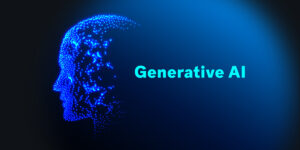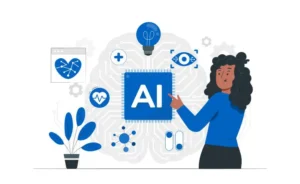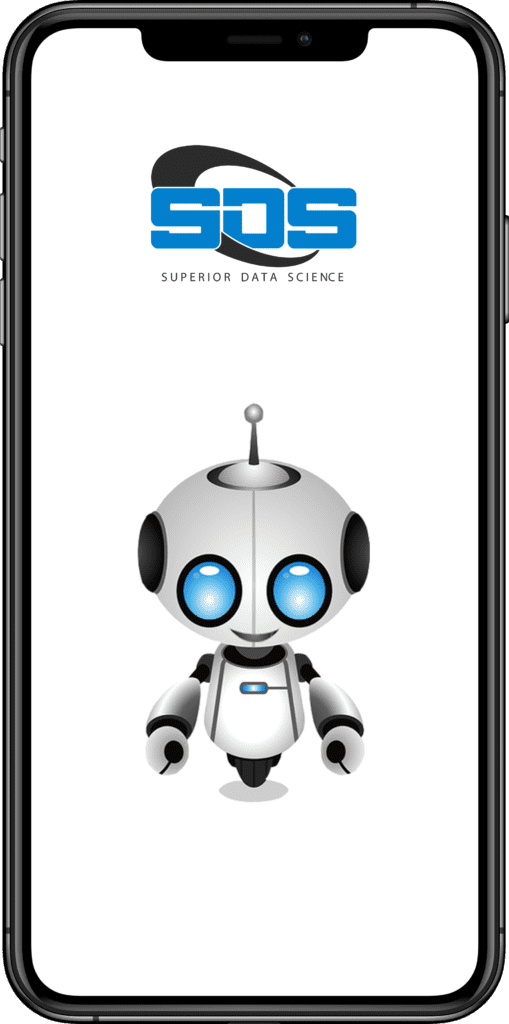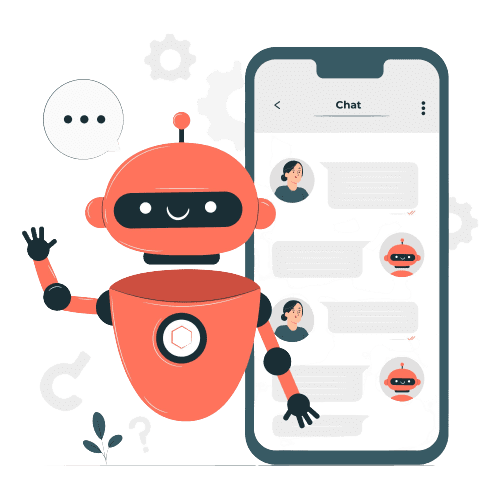Introduction
How to Train a Chatbot is a comprehensive guide that dives into the process of effectively training a chatbot to deliver accurate and relevant responses. In today’s digital era, businesses are leveraging chatbots as a powerful tool to engage with their customers efficiently. However, achieving optimal performance from a chatbot requires careful planning and implementation. This article provides valuable insights into the step-by-step process of training a chatbot, highlighting the benefits it brings to businesses and addressing the best practices to follow. Additionally, it sheds light on the challenges that may arise during the training process, equipping readers with the knowledge to overcome potential obstacles and create a highly effective chatbot.
What is a Chatbot?
Definition of a Chatbot
A chatbot is a program that mimics human conversations using voice or text interactions. It employs AI and NLP algorithms to comprehend and provide responses to user queries. Chatbots are designed to simulate human-like interactions and offer automated assistance. By leveraging AI and NLP, chatbots can understand and respond to user inputs effectively. These programs play a valuable role in various industries, providing efficient and personalized customer support.
Types of Chatbots
Chatbots can be categorized into rule-based and AI-powered types, each serving different purposes. Rule-based chatbots adhere to predefined rules and are suitable for handling basic tasks and interactions. AI-powered chatbots, on the other hand, utilize machine learning techniques to continuously learn and enhance their performance. These advanced chatbots adapt and improve over time, providing more sophisticated and personalized interactions. The choice between rule-based and AI-powered chatbots depends on the complexity and requirements of the intended use case.
Benefits of Using Chatbots
Chatbots offer numerous benefits to businesses and users alike. They provide instant responses, 24/7 availability, and can handle multiple queries simultaneously. Some key advantages of using chatbots include:
- Enhanced Customer Service: Chatbots can quickly address customer inquiries, providing timely assistance and improving customer satisfaction.
- Cost Efficiency: By automating repetitive tasks and reducing the need for human intervention, chatbots help businesses save costs associated with customer support.
- Increased Engagement: Chatbots offer interactive and personalized experiences, fostering user engagement and loyalty.
- Scalability: Chatbots can handle a large volume of inquiries simultaneously, allowing businesses to scale their customer support without significant resource investment.
Training a Chatbot
To train a chatbot effectively, several crucial steps should be followed:
Understanding the Purpose
Before training a chatbot, it is crucial to define its purpose and objectives. Clearly identifying the intended tasks and desired outcomes ensures a focused and effective design. By doing so, the chatbot can provide meaningful and relevant responses to user queries. This step is vital for aligning the chatbot’s capabilities with user expectations and needs. A well-defined purpose enhances the chatbot’s functionality and user experience.
Designing Conversational Flows
When designing conversational flows, it is essential to establish a logical structure for interactions. Identify various user intents and chart out potential dialogue paths for seamless conversations. This step plays a vital role in facilitating efficient and effective communication between the user and chatbot. By mapping out possible dialogue paths, the chatbot can navigate conversations smoothly and provide accurate responses. A well-designed conversational flow enhances the user experience and overall functionality of the chatbot.
Natural Language Processing (NLP)
Natural Language Processing (NLP) is vital for training chatbots as it enables understanding and interpretation of user inputs. NLP algorithms play a key role in extracting meaning, identifying keywords, and generating relevant responses. By implementing NLP, chatbots can comprehend user queries and provide accurate and contextually appropriate answers. It allows for a more conversational and interactive experience between the user and the chatbot. The use of NLP enhances the chatbot’s ability to handle natural language and improve overall user satisfaction.
Machine Learning
Machine learning is essential for training AI-powered chatbots as it enables learning from user interactions. By leveraging machine learning algorithms, chatbots can enhance their responses and adapt to evolving user preferences. Training data is utilized to optimize the chatbot’s performance and improve its accuracy and effectiveness. Through continuous learning, the chatbot becomes more capable of providing relevant and personalized interactions. Machine learning empowers chatbots to evolve and deliver improved user experiences over time.
Testing and Iteration
Regular testing is crucial to validate the accuracy and effectiveness of the chatbot’s responses. Evaluating user feedback helps refine the chatbot’s training and enhance its performance over time. Iterative processes are necessary for continuous improvement and ensuring optimal functionality of the chatbot. By iteratively testing and refining the chatbot, its accuracy and user satisfaction can be significantly improved. This iterative approach enables ongoing enhancements and ensures the chatbot remains effective and reliable.
Best Practices for Chatbot Training
To optimize chatbot training, consider the following best practices:
Define Clear Objectives
Defining clear goals and objectives is essential for the successful training of a chatbot. Having well-defined objectives enables the creation of targeted training strategies for the chatbot. This clarity ensures that the chatbot is trained to deliver the desired outcomes and meet specific goals. By aligning training efforts with clear objectives, the chatbot can be optimized for its intended purpose. Clearly defined goals enhance the effectiveness and efficiency of the chatbot’s training process.
Use Real User Data
Utilize real user data for training the chatbot by analyzing customer interactions, feedback, and frequently asked questions. This data offers valuable insights into user preferences, common queries, and aids in tailoring responses effectively. By leveraging real user data, the chatbot can be trained to provide relevant and personalized interactions. Analyzing user feedback helps identify areas for improvement and refine the chatbot’s performance over time. Real user data enables the chatbot to adapt and deliver a more satisfactory user experience.
Incorporate Contextual Understanding
To enable contextual understanding, the chatbot should consider conversation history and context for personalized responses. Taking into account the context enhances the user experience, making conversations with the chatbot more seamless. By leveraging conversation history, the chatbot can provide relevant and contextually appropriate answers. Contextual understanding allows the chatbot to grasp the nuances of user queries and deliver tailored responses. Providing personalized and contextual responses enhances the effectiveness and user satisfaction of the chatbot.
Optimize for User Experience
Prioritize delivering an exceptional user experience by designing an intuitive and user-friendly interface for the chatbot. Make sure the chatbot’s responses are concise, accurate, and easy for users to comprehend. By focusing on a positive user experience, you can increase user satisfaction and engagement levels. An intuitive interface and clear responses contribute to a seamless and enjoyable interaction with the chatbot. The goal is to create a chatbot that leaves users satisfied and eager to engage with it further.
Continuously Improve and Update
Continuously train the chatbot by regularly analyzing user interactions and feedback to identify areas for improvement. Ensure the chatbot’s training data is updated, responses are refined, and new features or capabilities are introduced as needed. Active analysis of user interactions and feedback allows for ongoing improvement and optimization of the chatbot’s performance. Regularly refining the chatbot’s responses based on user feedback enhances its effectiveness and user satisfaction. Introduce new features and capabilities to keep the chatbot up-to-date and aligned with evolving user needs.
Challenges in Chatbot Training
Training a chatbot poses several challenges that need to be addressed:
Language Ambiguity
The inherent ambiguity of natural language poses a challenge in accurately understanding user intents. To tackle this challenge, chatbots require robust Natural Language Processing (NLP) algorithms. Robust NLP algorithms enable chatbots to effectively comprehend user intents and provide accurate responses. Equipping chatbots with advanced NLP capabilities enhances their ability to understand and interpret user inputs. Accurate responses are facilitated by leveraging powerful NLP algorithms to overcome the complexities of natural language.
Handling User Errors
Effective handling of user errors and misunderstandings is crucial for chatbots to deliver satisfactory interactions. Chatbots should possess the capability to detect and correct errors, guiding users towards rephrasing or clarifying their queries. Furthermore, providing helpful suggestions can aid users in achieving successful communication with the chatbot. By addressing user errors and misunderstandings adeptly, chatbots can enhance user satisfaction and overall experience. The ability to handle user errors improves the chatbot’s reliability and fosters a more seamless conversation.
Balancing Automation and Human Intervention
Achieving the optimal balance between automated responses and human intervention is of utmost importance. Chatbots excel at autonomously handling numerous inquiries, yet certain scenarios may necessitate human assistance. Maintaining a seamless transition from chatbot to human support is vital to deliver a positive user experience. Striking the right balance ensures efficient and accurate resolution of user queries while providing personalized assistance. By seamlessly integrating chatbot and human support, users receive the best of both automated and human interaction.
Conclusion
In conclusion, mastering the process of “How to Train a Chatbot” requires a deep understanding of its purpose and effective implementation strategies. By designing well-structured conversational flows and incorporating natural language processing (NLP) and machine learning techniques, businesses can develop chatbots that provide accurate and personalized interactions with users. Regular testing and iteration are crucial for refining and improving the chatbot’s performance over time. By following best practices and addressing challenges such as maintaining context, handling complex queries, and ensuring seamless integration with existing systems, businesses can create chatbots that not only meet user expectations but also enhance customer experiences. Embracing the potential of chatbot technology allows businesses to effectively engage with their customers, drive business growth, and stay ahead in today’s digital landscape.











